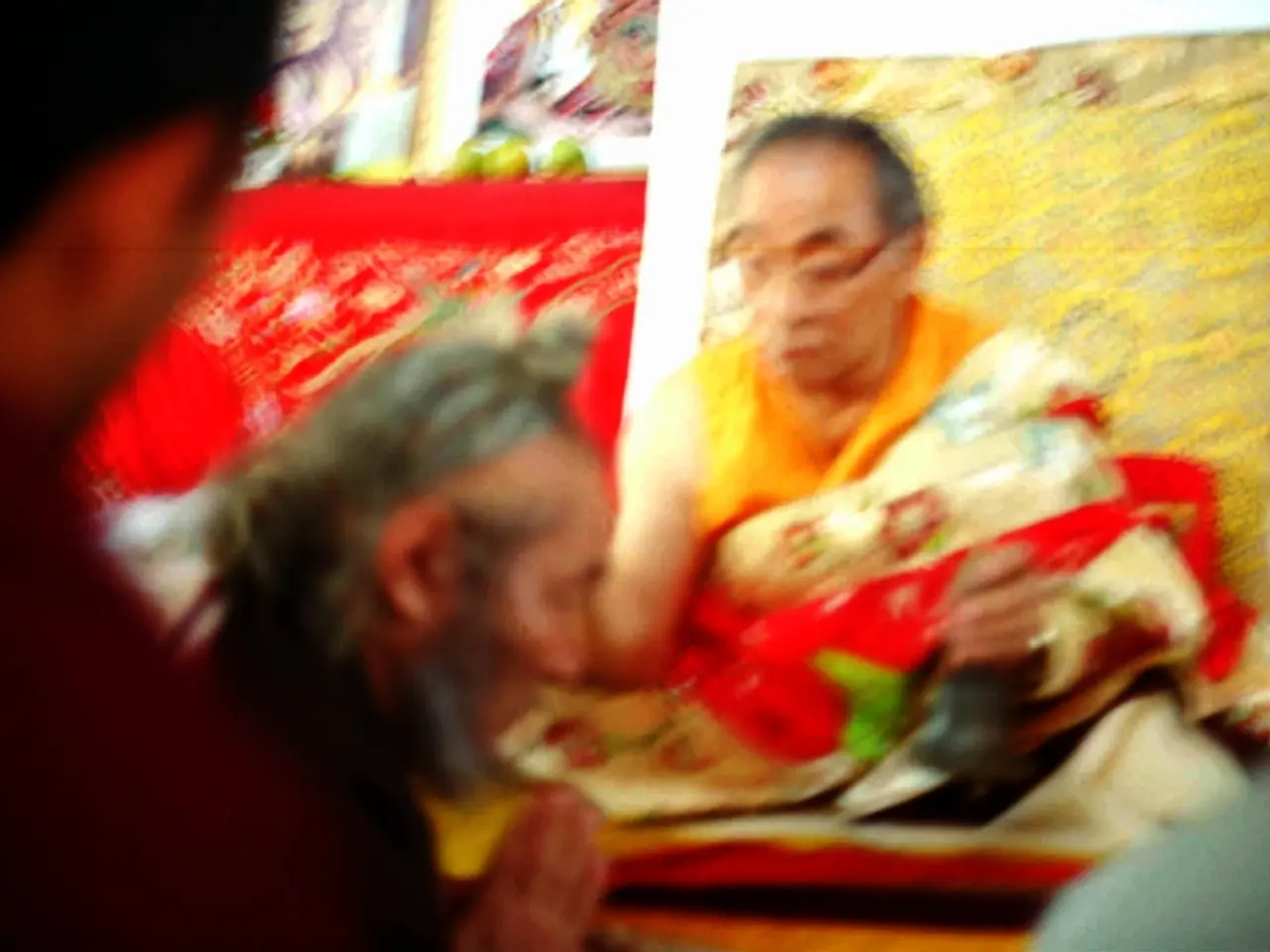Advocating Compassion (Karuna) and Non-Violence (Ahimsa) as Essential Guidelines for Living, according to the Dalai Lama
In the mystical landscape of Tibet, Buddhism has taken on a unique form, intertwined with practices that are as mysterious as they are profound. This is particularly true of the Gelug school of Tibetan Buddhism, led by the Dalai Lama, which has a rich history rooted in Tantrism.
Tantrism, or Vajrayana Buddhism, is a branch of Mahayana Buddhism that is characterised by esoteric teachings, ritual practices, and the use of mantras, mudras, and mandalas. The Gelug school, one of the four main schools of Tibetan Buddhism, has deeply integrated tantric methods into its meditation and ethical discipline, creating a synthesis of intellectual and mystical approaches.
The Dalai Lama lineage is closely linked to Avalokiteshvara, the Bodhisattva of Compassion, who is said to be the spiritual source of the Dalai Lamas' reincarnations. Avalokiteshvara, a tantric figure, embodies infinite compassion, a central ideal in Tibetan Vajrayana Buddhism. This tantric devotion to Avalokiteshvara emphasises compassion not only as an emotional virtue but as an active, transformative force in all sentient beings' liberation.
The fusion of tantric devotion and Mahayana Bodhisattva ideals has strongly shaped Tibetan Buddhism's focus on compassion and nonviolence. The Dalai Lama has consistently portrayed compassion as a practical foundation for happiness and peace. The 14th Dalai Lama, Tenzin Gyatso, illustrates this integration by promoting the tantric concept of compassion as an empowered, active principle rather than passivity, which informs his advocacy for peace, dialogue, and nonviolent resistance.
In essence, the Dalai Lama institution, through its Gelug affiliation, has prioritised scholarship and tantric practice, with Avalokiteshvara’s compassion as its core spiritual model. Tantrism enhances the teachings by emphasising ritual, visualisation, and mantric practices oriented towards universal compassion and enlightened activity. This synthesis has profoundly impacted Tibetan Buddhism’s approach to nonviolence, making it a deeply spiritual and practical path reflecting the Bodhisattva ideal embodied by the Dalai Lamas.
Thus, the history of the Dalai Lama's school of Buddhism reveals a strong tantric foundation shaping its emphasis on compassion and nonviolence, with tantric Avalokiteshvara devotion guiding the Dalai Lamas’ spiritual and political leadership across centuries.
The focus on intellectual and mystical approaches within the Gelug school of Tibetan Buddhism, led by the Dalai Lama, extends beyond traditional Buddhism to incorporate elements of health-and-wellness, as the Dalai Lama has consistently portrayed compassion as a practical foundation for happiness and peace. Additionally, the tantric devotion to Avalokiteshvara, a central figure in Tibetan Vajrayana Buddhism, highlights the fusion of science of mind (mental-health) and lifestyle, with its emphasis on compassion as an active, transformative force in sentient beings' liberation, reflecting trends in fashion-and-beauty that prioritize inner peace and self-improvement.




